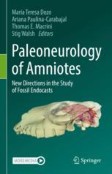Search
Search Results
-
Putting the energetic-savings hypothesis underground: fossoriality does not affect metabolic rates in amphibians
By living underground, fossorial animals may be challenged by limited gas exchange due to prolonged exposure to low oxygen levels (hypoxia) and...

-
Evolution Towards Fossoriality and Morphological Convergence in the Skull of Spalacidae and Bathyergidae (Rodentia)
Rodents show a wide range of anatomical, physiological, and behavioral adaptations to life underground. Cranial and postcranial bone morphologies are...

-
Ear morphology in two root-rat species (genus Tachyoryctes) differing in the degree of fossoriality
It is supposed that the subterranean lifestyle in mammals is reflected in ear morphology and tuning of hearing to low frequencies. We studied two...

-
Evolution of Appendicular Specializations for Fossoriality in Euryzygomatomyine Spiny Rats across Different Brazilian Biomes (Echimyidae, Hystricognathi, Rodentia)
The evolution of subterranean and fossorial rodents has been linked to the Neogene climatic shift to xeric conditions leading to open vegetation,...

-
The impact of locomotion on the brain evolution of squirrels and close relatives
How do brain size and proportions relate to ecology and evolutionary history? Here, we use virtual endocasts from 38 extinct and extant rodent...

-
Function and Constraint in the Marsupial Postcranium
The evolution of marsupial postcranial diversity and adaptation has long been conceptually tied to the ability of the otherwise highly immature...
-
Phylogenetic history influences convergence for a specialized ecology: comparative skull morphology of African burrowing skinks (Squamata; Scincidae)
BackgroundSkulls serve many functions and as a result, are subject to many different evolutionary pressures. In squamates, many fossorial species...

-
Function and Constraint in the Marsupial Postcranium
The evolution of marsupial postcranial diversity and adaptation has long been conceptually tied to the ability of the otherwise highly immature...
-
First evidence of convergent lifestyle signal in reptile skull roof microanatomy
BackgroundThe study of convergently acquired adaptations allows fundamental insight into life’s evolutionary history. Within lepidosaur reptiles—i.e....

-
Semicircular canal shape diversity among modern lepidosaurs: life habit, size, allometry
BackgroundThe shape of the semicircular canals of the inner ear of living squamate reptiles has been used to infer phylogenetic relationships, body...

-
Digging Up Convergence in Fossorial Rodents: Insights into Burrowing Activity and Morpho-Functional Specializations of the Masticatory Apparatus
Fossorial habits are tightly related to digging abilities in vertebrates and the most extreme fossorial specialization is being restricted to...
-
Serial disparity in the carnivoran backbone unveils a complex adaptive role in metameric evolution
Organisms comprise multiple interacting parts, but few quantitative studies have analysed multi-element systems, limiting understanding of phenotypic...

-
Fossorial adaptations in African mole-rats (Bathyergidae) and the unique appendicular phenotype of naked mole-rats
Life underground has constrained the evolution of subterranean mammals to maximize digging performance. However, the mechanisms modulating...

-
Phylogenetic, Allometric, and Ecological Factors Affecting Morphological Variation in the Scapula and Humerus of Spiny Rats (Rodentia: Echimyidae)
Locomotion, as a fundamental function in mammals directly associated with the use of ecological resources, is expected to have anatomical structures...

-
Brain Evolution in Fossil Rodents: A Starting Point
The goal of this chapter is to summarize work published on virtual endocasts of extant and extinct rodents and provide a framework to answer...
-
Inferring the palaeobiology of palorchestid marsupials through analysis of mammalian humeral and femoral shape
The relationship between ecology and morphology of the limbs in living placental mammals is well established and has been used to infer aspects of...

-
Anatomical Correlates of Cursoriality are Compromised by Body Size and Propensity to Burrow in a Group of Small Mammals (Lagomorpha)
Highly cursorial animals are specialised for fast, sustained running via specific morphological adaptations, notably including changes in limb...

-
What lies beneath? Molecular evolution during the radiation of caecilian amphibians
BackgroundEvolution leaves an imprint in species through genetic change. At the molecular level, evolutionary changes can be explored by studying...

-
Paleoneurology of Litopterna: Digital and Natural Endocranial Casts of Macraucheniidae
The Litopterna Ameghino 1889, is the second largest group of South American native ungulates in abundance and diversity after Notoungulata. The study...
-
Spatially associated or composite life traces from Holocene paleosols and dune sands provide evidence for past biotic interactions
Biotic interactions (e.g., predation, competition, commensalism) where organisms directly or indirectly influenced one another are of great interest...

